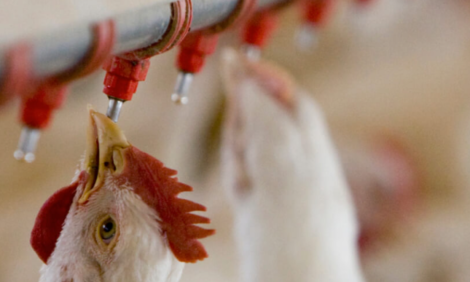



New Food Labelling Regulations
UK - On 13th December, the new Food Information to Consumers’ (FIC) regulations will come into force.They cover provision of mandatory information regarding:
- Origin on unprocessed fresh, chilled and frozen meat of swine, sheep, goats and poultry;
- And how Allergen or Nutritional information should be provided and when display of this information will become mandatory.
The act is all about how food information should be communicated to the consumer and protection against misleading labelling. Some parts of the existing labelling regulations (1996 Food Labelling Act) have been amended to include any new requirements of the FIC.
While the act comes into force on 13th December 2014, some parts of it will not be mandatory immediately.
Nutrition Labelling
From 2016, the FIC makes it mandatory to provide nutrition information on the back of pack, whereas previously, nutrition information was provided on a voluntary basis unless a nutrition claim was made.
Companies who already provide nutrition information will be required to comply with the new FIC rules for nutrition labelling by 13 December 2014, whereas companies who currently do not provide nutrition labelling will have until 13 December 2016 to put the required measures in.
The FIC details the nutrients required to be shown on pack and the order these should be presented in, that is energy (both in kJ and kcals) and the amounts of fat, saturates, carbohydrates, sugars, protein and salt.
Nutrition information has to be given per 100g/ml and can additionally be given per portion or per consumption unit and as per cent RI (formerly known as GDAs) for which there are now EU values.
Information on other nutrients can also be provided on a voluntary basis, as long as they are listed within the Regulation.
Country of Origin Labelling - Unprocessed Meat
From April 2015, it will be a mandatory requirement to state the country of origin or place of provenance for unprocessed fresh, chilled and frozen meat of swine, sheep, goats and poultry. It will be a mandatory requirement to state, on the label, in which country (or countries) an animal was reared and slaughtered.
The rearing periods differ by species and are defined as follows:
Swine:
- in case where the animal is slaughtered is older than six months, the last rearing period of at least four months or,
- in case the animal is slaughtered younger than six months, and with a live weight of at least 80 kgs., the rearing period after the animal has reached a live weight of 30 kilograms, but
- in case the animal is slaughtered younger than six months, the whole rearing period if the animal is slaughtered with a live weight of less than 80 kilograms,
Sheep and goats :
The last rearing period of at least six months or the whole rearing period in case the animal is slaughtered younger than six months.
Poultry:
The last rearing period of at least one month or the whole rearing period after being placed for fattening in case the animal is slaughtered younger than one month;
- If the term Origin is to be used, then all three stages of production, i.e. born, reared and slaughtered must be within one country
- The use of other more visible marketing terms such as 'British', or flags for example will be voluntary
Allergen Labelling
By 13 December 2014, where and how allergen labelling appears on a label will change. This is most likely to affect products that have been further processed in some way, like pies, breads and ice-cream.
The main changes relate to where the advice is given. Information is currently provided in separate allergen boxes, or separate from the ingredient list. From December 2014 the allergens should be located in the main ingredient list, but additionally, highlighted in bold.
There are exemptions from Allergen labelling, some of these include,
- Unprocessed products that comprise a single ingredient or category of ingredients;
- Processed products which the only processing they have been subjected to is maturing and that comprise a single ingredient or category of ingredients;
- Food in packaging or containers the largest surface of which has an area of less than 25cm2;
- Food, including handcrafted food, directly supplied by the manufacturer of small quantities of products to the final consumer or to local retail establishments directly supplying the final consumer.
- When food is sold loose, i.e. at a counter, and is not wrapped, the FSA have published guidance that details the steps that are to be followed.
General Exceptions to FIC
There are some exemptions, where food is offered for sale to the final consumer, and is not pre packed, or where food is packed on the sales premises, while still mandatory to stipulate allergen information, it will not be a mandatory requirement to offer origin or nutritional information.
However, if this information is offered voluntarily, then FIC regulations must be adhered to.
So for example a butcher at their premises or producer selling poultry meat from the farm gate who voluntarily offers origin or nutritional information will, from 13 December 2014 have to provide that information according to the new FIC requirements.
The Food and Drink Federation (FDF) and The British Retail Consortium (BRC) have published guidance for those who retail food, and requirements for the new regulations.








